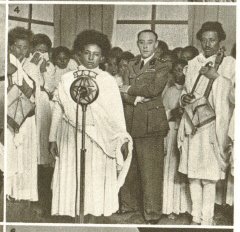it's not meles' fault

It is easy to blame a country's problems on the country's leader...but it's not meles' fault. Meles and EPRDF took the baton but had no clue which way to march. Ethiopia was a weak country in 1991. The people were weak and beaten by fear and death from the previous regime. The government was in pieces scattered all around ethiopia. There did not exist any clear, straight path for EPRDF and Meles to take. So, here comes IMF and World Bank advisors with a defined plan of success for ethiopia based on their own interpretation of ethiopia's needs (cultural pluralism and consociationalism). Meles and EPRDF had to take their advise...what other choice did they have?....ethiopia was vulnerable and as leaders of Ethiopia Meles and EPRDF were vulnerable...they needed money from the World Bank and IMF and other democratic governments....moreover they needed to get into the globalization race and compete on an international level. So, how can you blame meles for dividing Ethiopia into ethnic groups...it was the mis-advice of development banks...you can only blame meles for being so foolish and easily blinded by money and power...however I think that is the case of most human beings...you get excited when you see a big government official or celebrity ...not because of their work...but merely because of their title and power...so meles is a victim of being human. So ethiopians need to stop focusing so much on Meles, woyanes, EPRDF and need to focus on ethiopia's political structure-the constitution, the parliament, the courts- and we need extensive research on the effects of the new political structure on ethiopia's economy and society. We need to strengthen our political and economic structure so that it wont be vulnerable to human faults.
.gif)




























